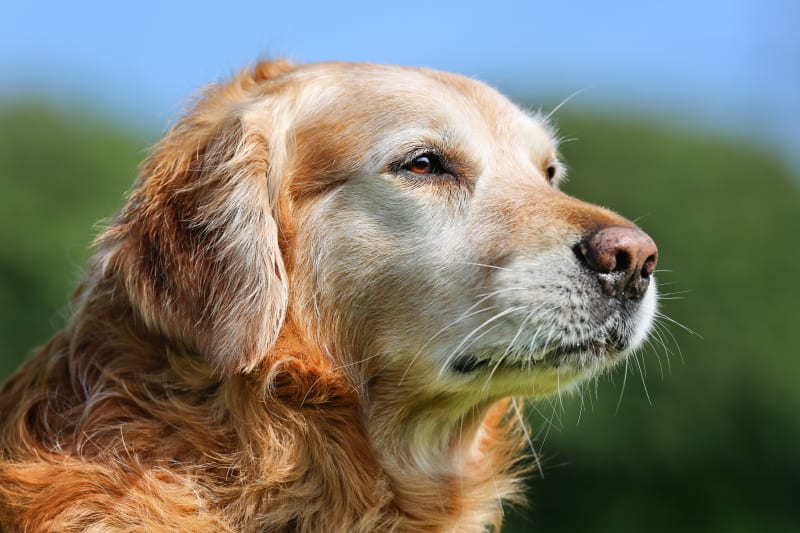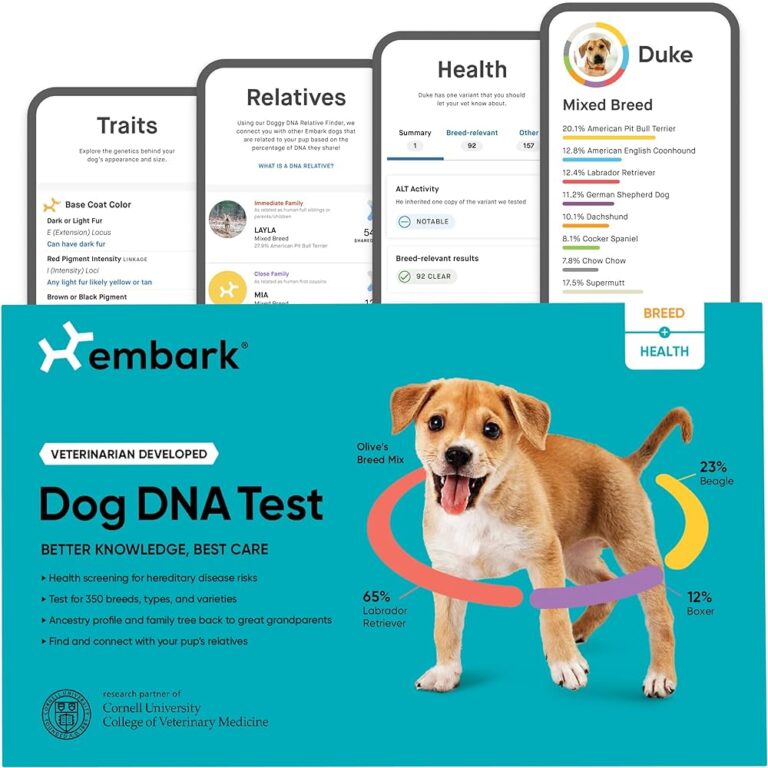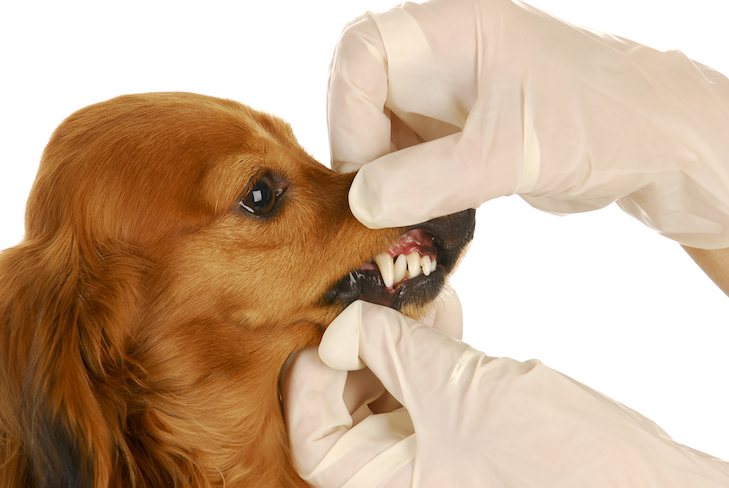When do Large Breed Dogs Become Geriatric? Explained
Last Updated on May 14, 2024 by Petpalace54
Large breed dogs become geriatric around the age of 6 to 7 years old. This can vary based on their breed and overall health. As dogs age, they may experience various health issues and a decrease in activity levels. It is essential to provide them with proper care and regular check-ups to help them age comfortably. Many pet owners wonder when their dogs become seniors or geriatric since different breeds tend to age at different rates.
When do Large Breed Dogs Become Geriatric? Some large breeds like the German Shepherd, Labrador Retriever, Golden Retriever, Rottweiler, & Australian Shepherd are considered senior dogs after the age of 6 to 7 years old. We will discuss more about when larger breed dogs become geriatric, signs of aging, and how to care for them to help them live happy and healthy life.
Table of Contents
- 1 When Is A Dog Considered Senior?
- 2 At What Age Are Large Breed Dogs Considered Geriatric?
- 3 Physical Changes In Geriatric Large Breed Dogs
- 4 Common Health Issues In Geriatric Large Breed Dogs
- 5 Caring For Geriatric Large Breed Dogs
- 6 Frequently Asked Questions On When Are Larger Breeds Dogs Geriatric
- 7 Conclusion
When Is A Dog Considered Senior?
Larger dog breeds such as the German Shepherd, Rottweiler, and Australian Shepherd are considered geriatric after the age of 7 or 8. Signs of aging vary between dogs, but changes in mobility and energy levels can be noticeable, making it important to have regular check-ups with a veterinarian to monitor their health.
Age Range For Senior Dogs
The age at which a larger breed dog is considered geriatric, or a senior, can vary depending on the individual dog’s breed and size. Generally, dogs between the ages of 7 and 10 years are considered senior. However, larger breed dogs tend to age faster than smaller breeds, so a Great Dane might be considered senior around age six while a Pomeranian might not be considered senior until age ten or older.
Factors That Determine Seniority
Several factors contribute to determining when a dog is considered senior besides their breed and size. For instance, a dog’s overall health, genetics, & lifestyle can all impact how they age. Dogs that live a healthy lifestyle with a balanced diet, regular exercise, and regular veterinary check-ups, tend to live longer and remain healthier into their senior years. Genetics plays a role too, with some breeds having a predisposition to certain diseases that can develop later in life, such as arthritis, cancer, or heart disease.
Aging in dogs is different from humans, and the signs of aging can vary widely. Some dogs won’t show any signs of aging until they’re much older, while others may start to slow down as early as six years old. Dogs commonly show signs of aging like gray hair, weight gain, decreased mobility, decreased appetite, and cognitive decline.
In conclusion, while there is no set age at which all larger breed dogs are considered seniors, owners can keep an eye out for signs of aging and take steps to help their dogs remain healthy and happy in their golden years. Thus, regular veterinary check-ups, a healthy diet, exercise plan, and keeping an eye out for unusual changes in behavior or physical health can all help ensure that your senior dog remains healthy & happy for as long as possible.

Credit: www.amazon.com
At What Age Are Large Breed Dogs Considered Geriatric?
Large breed dogs such as German Shepherds and Rottweilers are considered geriatric around 7-8 years old. As they age, they may experience common health issues such as arthritis and decreased mobility. Regular veterinary check-ups and a nutritious diet can help them maintain a good quality of life.
As dogs age, they start developing age-related health issues just like humans. However, for large breed dogs, the onset of geriatric health problems occurs much earlier than for small breed dogs. Owners of large breed dogs must be aware of this and consider these facts when it comes to their pet’s health. So, at what age are large-breed dogs considered geriatric?
Age Range For Geriatric Large Breed Dogs
Large breed dogs are generally considered geriatric when they reach 6 to 8 years old. However, this age range varies depending on the individual breed, as some breeds are more prone to aging-related issues than others. For instance, giant breeds like St. Bernards and Great Danes have shorter lifespans & are more susceptible to aging as young as 5 years old.
It is imperative to take extra care of large breed dogs as they age. Regular veterinary check-ups, a balanced diet, and moderate exercise can help maintain their overall well-being & prevent the onset of potential age-related health problems.
Comparison To Small Breed Dogs
It is important to note that small breed dogs age differently compared to large breed dogs. Small breeds have longer lifespans, and their bodies age much slower than large breeds. Small breed dogs generally become geriatric around 10-12 years old, and some have even been known to live into their late teens.
While size is a significant factor in determining when a dog is considered geriatric, other factors such as diet, exercise, and genetics can also play a role. It is crucial for pet owners to be aware of their pet’s aging process and take the necessary steps to ensure a healthy and happy life.
In conclusion, large breed dogs are considered geriatric when they are between 6-8 years old, and small breed dogs become geriatric around 10-12 years old. However, age range varies depending on the individual breed, other factors like diet, exercise, & genetics play a role in determining geriatric age. It is essential to take proactive measures, such as regular veterinary check-ups, to ensure our furry friends’ longevity and quality of life.
Physical Changes In Geriatric Large Breed Dogs
Geriatric large breed dogs experience physical changes due to aging, which can lead to various health issues. Large dog breeds such as German Shepherds, Labrador Retrievers, Golden Retrievers, Rottweilers, and Australian Shepherds are considered geriatric after the age of six.
Musculoskeletal Changes
As large breed dogs enter their geriatric years, they may experience a variety of physical changes. One of the most common changes is in their musculoskeletal system, which includes their bones, joints, & muscles. Many larger breeds may suffer from arthritis, which can cause stiffness, reduced mobility, and discomfort. Maintaining a healthy weight and regular exercise can help to minimize the development and severity of arthritis. Additionally, providing soft & comfortable sleeping surfaces can reduce pressure on their joints, thus reducing discomfort.
Vision & Hearing Impairment
Another physical change that geriatric large breed dogs may experience is a decline in their vision and hearing abilities. While this is a natural part of aging, it can impact their daily lives & make them more vulnerable to accidents and injuries. Regular visits to the veterinarian can help detect any early signs of vision or hearing loss, and preventive measures can be taken to improve their quality of life. For example, providing a well-lit living environment, using scent & touch cues, and keeping them in a safe and controlled space can help prevent injuries.
Digestive Changes
Digestive changes are also common in geriatric large breed dogs. As dogs age, their body’s capacity to absorb nutrients & digest food decreases, making them more prone to gastrointestinal problems such as constipation, diarrhea, and vomiting. Additionally, they may experience a decrease in their appetite or become more selective in their eating habits. Providing a nutritionally balanced diet tailored to their age, size, & health needs, along with regular monitoring of their behavior and physical condition, can help prevent digestive problems and ensure that they receive the nutrients they need to maintain their health.
Overall, it is important to be aware of the physical changes that geriatric large breed dogs may experience & to provide them with the appropriate care and support they need to maintain their quality of life. Regular visits to the veterinarian, proper nutrition, exercise, and keeping their living environment comfortable and safe can help ensure that they stay healthy and happy in their later years.

Credit: en.wikipedia.org
Common Health Issues In Geriatric Large Breed Dogs
Large breed dogs such as German Shepherds, Rottweilers, and Labradors are considered geriatric after the age of 7 to 8 years. When do Large Breed Dogs Become Geriatric? Yes, common health issues in geriatric large breed dogs can include joint problems, decreased mobility, & weight gain, among others.
Then, regular veterinarian check-ups and proper care can help to manage these issues and keep your furry friend healthy.
As larger breed dogs get older, they become more susceptible to health issues affecting their quality of life. These health issues are especially prevalent in geriatric large breed dogs. Some common health issues include arthritis, obesity, heart disease, and cancer. Let’s delve into each of these issues in more detail:
Arthritis
Arthritis is a common ailment in geriatric large breed dogs. It can cause pain, stiffness, & difficulty with movement. It’s essential to watch for warning signs of arthritis, such as limping or difficulty getting up from a lying position. Weight management, physical therapy, and medication are good treatment options for dogs with arthritis.
Obesity
Obesity is a growing health issue in geriatric large breed dogs. Obesity increases the risk of developing other health issues such as diabetes, heart disease, and arthritis. A healthy diet and regular exercise can help keep your dog at a healthy weight. Watch out for signs of obesity such as difficulty walking or breathing, low energy, & excessive panting.
Heart Disease
Heart disease is also a prevalent health issue in geriatric large breed dogs. The most common form of heart disease is called congestive heart failure. Symptoms of heart disease include coughing, shortness of breath, and fatigue. Your veterinarian can diagnose heart disease & administer appropriate treatment.
Cancer
Unfortunately, cancer is a frequent occurrence in geriatric large breed dogs. The risk of developing cancer increases with age in dogs. Common types of cancer in dogs include lymphoma, mammary gland tumors, and skin cancer. Watch for warning signs of cancer such as lumps, bumps, or any abnormal growths. Early detection & treatment may save your dog’s life.
In summary, geriatric large breed dogs are susceptible to common health issues such as arthritis, obesity, heart disease, and cancer. It’s essential to watch for warning signs of these issues and seek veterinary treatment when necessary. A healthy diet, regular exercise, & appropriate medical care can improve the quality of life for geriatric large-breed dogs.
Caring For Geriatric Large Breed Dogs
Large breed dogs like the German Shepherd, Labrador Retriever, Rottweiler, and Golden Retriever are considered geriatric or seniors after reaching the age of 7. Aging in dogs varies depending on their breed, with larger breeds showing signs of aging sooner than smaller breeds.
As a pet owner, you need to be mindful of the care and health of your geriatric large breed dog.
Dietary Considerations For Geriatric Large Breed Dogs
As large breeds of dogs age, their nutritional requirements change. It is important to ensure that their diet is balanced & rich in nutrients such as proteins, fats, and vitamins. Additionally, it is advisable to switch them to a low-fat and low-calorie diet to maintain their weight. Large breeds are prone to joint problems, and feeding them food rich in glucosamine and chondroitin can be beneficial. You can also switch them to specialized prescription diets recommended by veterinarians.
Exercise And Mobility For Geriatric Large Breed Dogs
Old age affects the mobility and flexibility of large breed dogs, and they tend to become inactive and less playful. However, regular gentle exercise such as short walks, swimming, & low impact playtime can help maintain their physical health and improve their mood. Avoid rigorous activities like jumping, running, and climbing stairs as it may strain their joints.
Veterinary Care For Geriatric Large Breed Dogs
Regular health check-ups are necessary for large breed dogs as they age. You should take them to the veterinarian at least twice a year for thorough physical examinations to detect illnesses & health issues early. Large breeds are susceptible to joint and bone issues, and your vet may recommend supplements or medications. It is also essential to maintain their dental health & hygiene to prevent gum diseases and tooth loss.
In conclusion, caring for geriatric large breed dogs requires attention & special care. A balanced diet and regular gentle exercise can keep them healthy and happy. Regular veterinary check-ups can also detect and prevent health issues. With well-rounded care, your furry friends can enjoy their golden years comfortably.

Credit: www.fallsroad.com
Frequently Asked Questions On When Are Larger Breeds Dogs Geriatric
At What Age Do Large Breed Dogs Become Seniors?
Large breed dogs are considered seniors after the age of 6-7 years old, depending on the breed. German Shepherds, Labrador Retrievers, Golden Retrievers, Rottweilers, and Australian Shepherds are examples of larger breeds that may fall into this category.
At What Age Do Large Dogs Start To Slow Down?
Large breed dogs typically start to slow down and become seniors after the age of 7. Breeds such as German Shepherds, Labrador Retrievers, Golden Retrievers, Rottweilers, and Australian Shepherds are among those that are considered senior dogs at this age.
At What Age Is A Dog Considered Geriatric?
Large dog breeds such as German Shepherds, Labradors, Golden Retrievers, Rottweilers, and Australian Shepherds are considered geriatric dogs at the age of 7 years old.
What Is The Life Expectancy Of A Large Dog?
Generally, large dog breeds like German Shepherds, Rottweilers, and Golden Retrievers are considered senior dogs after the age of 7. The life expectancy of a large dog breed is around 8 to 12 years, depending on their breed & overall health.
Conclusion
To sum up, when do Large Breed Dogs Become Geriatric, larger dog breeds typically enter geriatric age around 7 to 10 years old. At this age, they will experience physical and behavioral changes, which require more specialized care and attention. It is essential to monitor your pet’s health regularly, feed them with a proper diet, and give them adequate exercise and rest.
By doing so, you can ensure that your beloved furry friend lives a healthy and happy life, even in their golden years. Remember, with age comes wisdom, & geriatric dogs have plenty of that to share with their owners.


